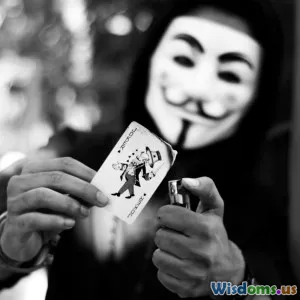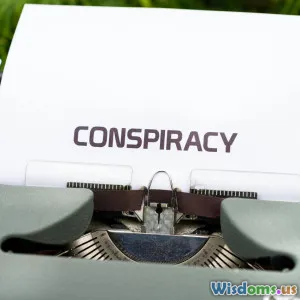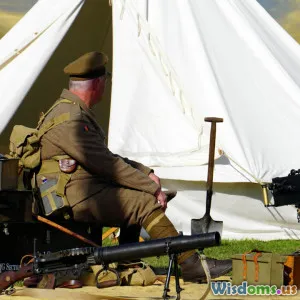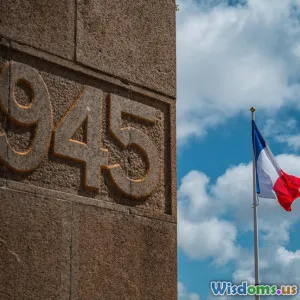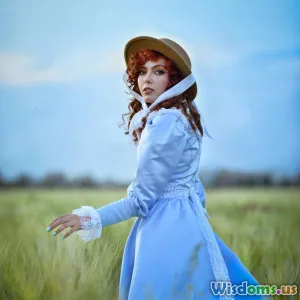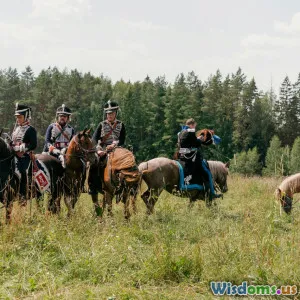
Comparing Secret Societies: Common Myths vs. Documented Facts
8 min read Explore the myths and realities of secret societies to separate fact from fiction and understand their true nature. (0 Reviews)
Comparing Secret Societies: Common Myths vs. Documented Facts
Secret societies have long captured the human imagination, stirring curiosity, fear, and fascination. From whispers of world domination to claims of mystical rituals, they permeate popular culture and conspiracy theories alike. But how much of what we think we know is true? This article seeks to dissect the myths that cloud secret societies and contrast them with historical, documented facts, offering a clearer view of these enigmatic organizations.
Introduction
Secret societies such as the Freemasons, the Illuminati, and the Skull and Bones have become legendary subjects shrouded in mystery. Their stories often blend fact, exaggeration, and fantasy, fueling narratives ranging from philanthropic brotherhoods to shadow governments. Yet, in an era flooded with misinformation and sensationalism, separating truth from fiction is vital for a grounded understanding.
This exploration is not merely academic; it touches on the social roles secret societies have played, how myths evolved, and the socio-political contexts underlying them. Whether you’re a skeptic or a curious truth-seeker, this article provides an evidence-based guide through the myths versus facts surrounding secret societies.
Myth 1: Secret Societies Control the World
One of the most pervasive myths is that secret societies wield unchecked global power, influencing governments, economies, and cultures covertly.
The Illuminati: Puppet Masters?
The original Bavarian Illuminati, founded in 1776 by Adam Weishaupt, aimed to promote Enlightenment values like reason and secularism. Historians like Professor Brad S. Gregory note that the group was disbanded and outlawed by Bavarian authorities within a decade due to political pressure and its clandestine methods.
Modern conspiracy theorists claim the Illuminati continues underground, manipulating global events. However, documented evidence reveals no credible proof beyond sensational narratives. Instead, much of the legend grows from fictionalized accounts and misinterpretations—such as the false assumption that the Illuminati established the Federal Reserve or orchestrated wars.
Freemasons: Influencers or Fraternal Order?
Freemasonry, with documented roots tracing to medieval stonemasons' guilds, is a worldwide fraternal organization with charitable activities and philosophical teachings. While its members have included prominent historical figures (e.g., George Washington and Winston Churchill), scholarly research stresses that Freemasonry functions more as a social network than a shadow government.
Several governments, after initial suspicion, have integrated Masonic individuals openly into political life without substantiation of clandestine control.
Myth 2: Secret Societies are Exclusively Male and Elitist
The lore often depicts secret societies as secret male-only clubs composed solely of aristocrats or billionaires.
Gender and Inclusion
Historically, secrecy and exclusivity shaped many societies; however, numerous secret organizations allowed varying degrees of female membership, particularly in the 20th and 21st centuries. For example, the Order of the Eastern Star, affiliated with Freemasonry, welcomes both men and women and focuses on ethical teachings and charity.
Socioeconomic Diversity
Though elite membership is prominent in some societies due to networking benefits, secret societies branch across social classes and professions. Student groups like Yale’s Skull and Bones originated as elite circles but have always recruited from university settings rather than solely from aristocratic backgrounds.
Therefore, depicting all secret societies as elitist male clubs ignores the substantial variation across organizations and time periods.
Myth 3: Secret Societies Engage in Dark or Occult Practices
Another widespread perception links secret societies with ritualistic, occult, or sinister ceremonies.
Fact: Symbolism and Rituals are Often Misunderstood
Many secret societies use rituals and symbolism drawn from historical or philosophical traditions. Freemasons’ use of architectural tools (compasses, squares) symbolize moral teachings rather than occultism.
Anthropologist Dr. Susan Harding explains that such rituals often serve as bonding exercises and transmission of organizational values rather than diabolical purposes.
Academic investigations into societies like the Rosicrucians clarify that mysticism played symbolic roles aimed at self-improvement.
Myths Fueled by Popular Media
Fiction, films, and novels frequently exaggerate secret society portrayals, keynote examples being Dan Brown's "The Da Vinci Code" or "National Treasure." These works ignite curiosity yet blur lines between imaginative storytelling and historical fact.
Myth 4: These Societies Are Entirely Secret and Unreachable
How secret are secret societies? The idea that they function beyond any public knowledge or scrutiny is exaggerated.
Transparency Within Limits
While membership lists and specific ceremonies might be confidential, many organizations publish literature, maintain websites, and conduct public charitable events. For example, Prince Hall Freemasonry, historically African-American, is transparent about its community involvement.
Furthermore, former members, historical documents, and investigative reporting have illuminated much about their structures and traditions.
Legal Status and Accountability
Many secret societies legally register as nonprofit or social organizations subject to regulatory frameworks, negating the notion of them operating as inscrutable clandestine entities.
Conclusion: Between Myth and Reality
Secret societies captivate because they play on human intrigue about hidden knowledge and power. Yet, approaching their history and function through critical inquiry reveals a landscape far more nuanced than sensational myths.
While they are exclusive by design in many cases, most secret societies serve social, philanthropic, and philosophical roles, often embedded in societal development rather than societal control. Their rituals are frequently symbolic agents of community rather than sinister rites.
Understanding secret societies involves dispelling the fog of conspiracy theories, seeking verified historical evidence, and appreciating the cultural contexts that fuel myths. In doing so, we replace mystification with enlightened insight, fostering informed perspectives rather than fear or fascination based solely on supposition.
As author Dan Brown himself acknowledges in interviews, “If you really want to know the truth, start with facts, not fiction.” This article hopes to contribute to such a fact-based understanding.
References and Further Reading
- "The Bavarian Illuminati" – Brad S. Gregory, New Oxford Review 2016
- "Freemasonry: A Very Short Introduction" – Andreas Önnerfors, Oxford University Press (2017)
- "Conspiracy Theory in America" – Lance deHaven-Smith
- "Secret Societies – Inside the Masonic Lodge" – SIP* Society Educational Material
- "The Rosicrucian Enlightenment" – Frances A. Yates
This article is for educational and informational purposes and is based on currently available researched data.
Rate the Post
User Reviews
Popular Posts












